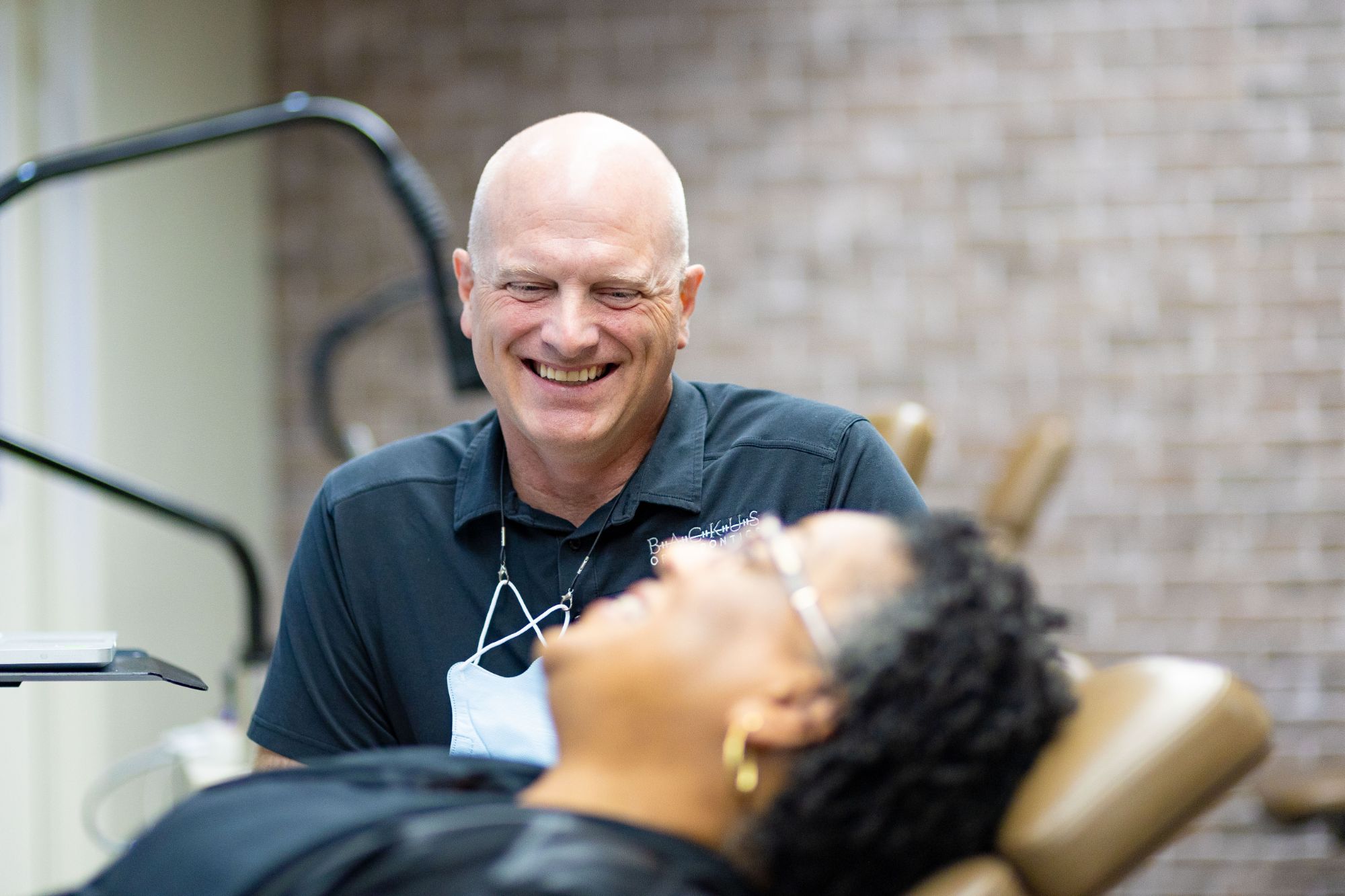You’ve probably known someone in Hoover who wore braces. Maybe you’re considering them for yourself. Or, if you’re a parent, you’re mulling over braces for one of your kids. How do braces work? Dr. Backus and the Backus Orthodontics team can let you in on all the secrets about braces!
Why Braces?
Braces are not just for improving your smile. They serve a functional purpose, too. They can fix a host of dental woes that many of our patients face. Problems like crowded teeth, overbites, and underbites are more than cosmetic concerns. They can lead to difficulties in brushing and flossing, increased risk of cavities, and even issues with eating and speaking.
The Mechanics of Braces
Understanding how braces work can make your whole treatment experience more manageable. At its core, braces are a system of brackets and wires that apply continuous pressure on your teeth. The pressure allows your teeth to move gradually into a new, corrected position. The bone in your jaw adapts to this movement, securing the teeth in their new spots.
Now, let’s hear it straight from Dr. Backus. One tip he often shares with patients (like you) is to expect some sensitivity during the first week. Your teeth are getting used to the pressure. And it’s completely normal. Dr. Backus recommends soft foods and over-the-counter pain relievers to ease any discomfort.
Different braces may have unique components, but the basic principle remains: controlled pressure leads to movement. Your wires get adjusted periodically during your visits to Backus Orthodontics. Adjustments like these help your teeth continue to move in the right direction. It’s a precise science. And rest assured, you’re in capable hands with Dr. Backus and our team.
Having a foreign object in your mouth may seem intimidating. But remember that braces are a documented and proven way to correct dental issues. They’ve been around for a long time for a good reason: they work.
Types of Braces at Backus Orthodontics
When it comes to straightening teeth, one size doesn’t fit all. That’s why at Backus Orthodontics, we offer various options to suit different needs and lifestyles. Let’s break down the main types you’ll find at our office.
Metal Braces: These are the traditional braces most people are familiar with. They’re durable and get the job done, especially for more complex dental issues.
Clear Braces: Want something less noticeable? Clear braces use tooth-colored brackets, making them less visible than their metal counterparts.
We designed our office to make you feel at ease. It’s a family-friendly space where you’ll feel more like you’re catching up with old friends than sitting in a dental chair. Dr. Backus and our team explain your options clearly so you can make the best choice for you.
Remember, the type of braces you choose will depend on the complexity of your dental issues. Other factors like your lifestyle and personal preferences will also influence what braces you choose. Dr. Backus is here to guide you through the decision-making process, ensuring you pick the best fit for you.
Your Treatment Journey
Getting braces is a process, but don’t worry. We’ve got it down to a science at Backus Orthodontics. Your treatment plan will begin with an initial consultation where Dr. Backus will examine your teeth and discuss your treatment options. Once you decide on the type of braces, we’ll schedule an appointment to place them.
After your braces are on, you’ll visit us regularly for adjustments. These appointments are crucial for keeping your teeth moving in the right direction. Dr. Backus will adjust your wires. You might even get to choose new rubber band colors if you have traditional braces.
Now, what about the duration? Treatment times vary depending on the particulars of your bite. Some people might wear braces for as short as six months, while others might need them for over two years. Dr. Backus will give you an estimated timeline during your initial consultation.
Once your teeth have moved into their new positions, it’s time for the braces to come off. But your journey doesn’t end there. You’ll likely need to wear a retainer. What’s a retainer for? To help your teeth remain in their new, straight positions.
Life with Braces
Living with braces is an adjustment (adjustment…get it?). But it’s manageable, especially when you know what to expect. First off, you’ll need to make some changes to your eating habits. Hard and sticky foods are a no-go, as they can damage your braces. Think soft foods like mashed potatoes and yogurt, especially in the first few days.
Cleaning your teeth will also require extra attention. Regular brushing and flossing are necessary. But you’ll need to navigate around the wires and brackets. Dr. Backus recommends using an interdental brush to clean those hard-to-reach spots between the wires and your teeth.
Speaking of Dr. Backus, here’s a tip straight from him: invest in a water flosser. It’s extremely helpful for getting between your wires and brackets. The result? You’ll streamline your oral hygiene routine.
You might also experience discomfort or minor sores in your mouth, especially after tightening your braces. Dr. Backus suggests using orthodontic wax to cover any sharp edges on the brackets that might be irritating.
And let’s remember sports. If you’re an athlete, make sure to wear a mouthguard to protect both your braces and your teeth during physical activities.
Life with braces comes with challenges. Just remember that it’s a temporary phase for a lifetime of straight teeth and improved oral health. And you’ve got Dr. Backus and our Backus Orthodontics team to guide you every step.
Em-Brace Your Treatment At Backus Orthodontics
Braces can do some dazzling work for you at Backus Orthodontics. If you’re local to Hoover, visit us here to schedule your free consultation. Dr. Backus and the rest of our stupendous team can’t wait to see your new smile!


